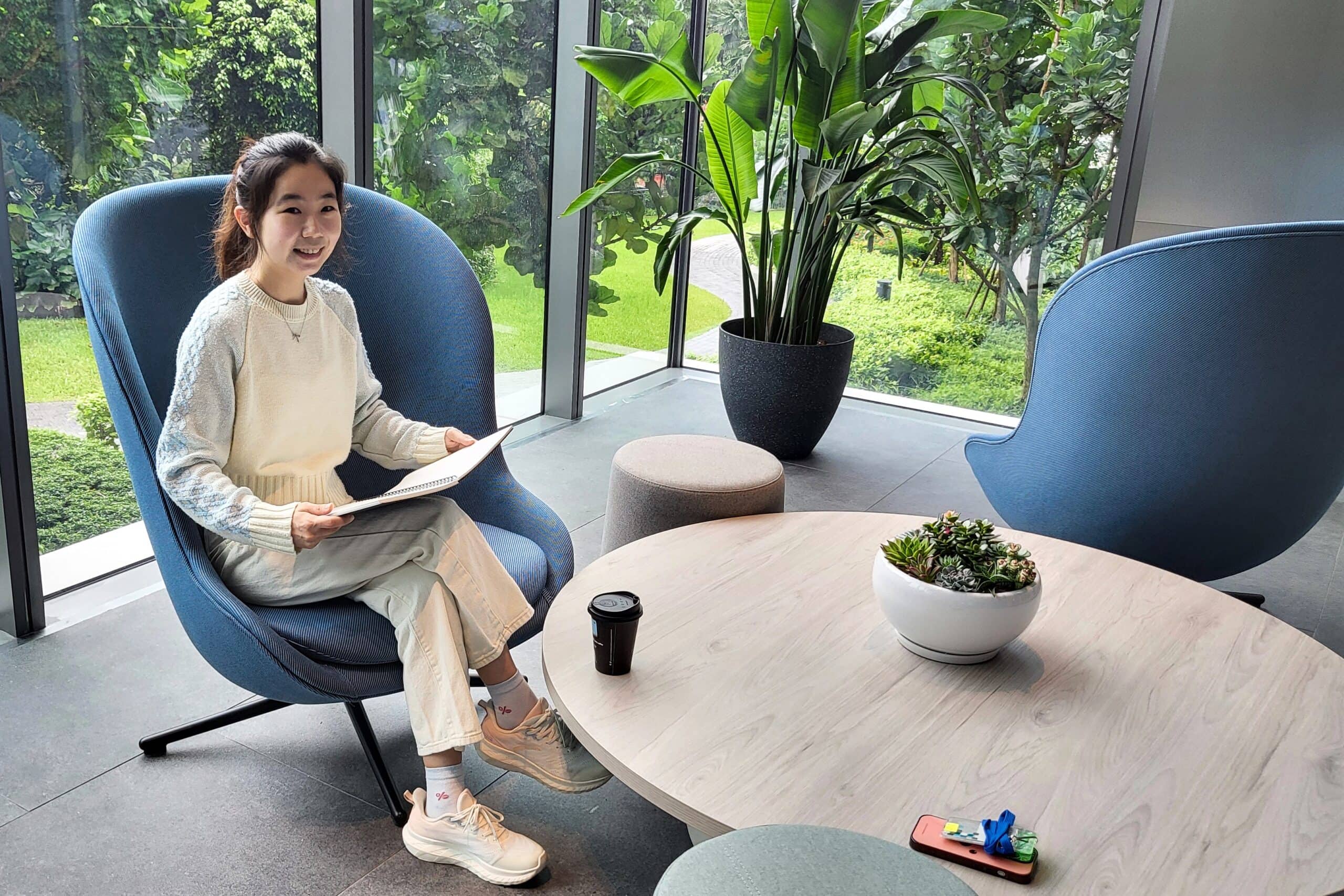How to develop sustainable membranes

At Aquaporin, we are dedicated to conserving water, a crucial natural resource. Tackling water scarcity requires a multi-disciplinary and holistic approach, as challenges range from constraints of the natural landscape to human geopolitical concerns. With our focus on low-energy biomimetic membranes, we aim to be part of the solution, continuously pursuing efficient use of water, extensive water reuse, and responsible power use.
Empowering our customers to reduce their energy consumption and carbon footprint is just the beginning. We are constantly seeking ways to improve, including exploring how to minimize our membranes' environmental impact from fabrication to final product. In pursuit of this goal, we have established a partnership with the National University of Singapore (NUS), a premier academic institute with great excellence in engineering research.
Zhang Xiting, a PhD student studying at NUS, took up our academic offer. The collaboration between NUS and Aquaporin offers students like Xiting a unique industrial research project in developing more sustainable membranes.
In this blog post, she shares some of her experiences and goals at Aquaporin.
What are sustainable membranes?
Novel membranes can be deemed to have achieved improved sustainability by examining them from several key perspectives.
Firstly, we examine them using the criteria of waste reduction, where the aim is to improve waste management and reduce environmental pollution through the adoption of sustainable materials: namely, biodegradable, renewable, and/or recyclable materials, reagents, and solvents. At the same time, this promotes a commitment to responsible production and consumption, as the use of such materials would minimize chemical consumption.
Secondly, the new membranes should demonstrate economic advantages, with efforts directed toward lowering operation or fabrication costs. From a business perspective, this fosters a greater incentive to adopt the new, more sustainable membranes.
My goal is to demonstrate the feasibility of using biodegradable or recyclable solvents during membrane fabrication – and to show that the membranes developed using these solvents can match or exceed the performance of current market offerings.
I hope my findings will encourage wider adoption of the new fabrication processes, thereby reducing the general environmental impact of membrane production.
How is research in sustainable membranes conducted?
First, a support substrate will be manufactured, or purchased from the industry. This will provide mechanical support for the active layer of the membrane. The active layer is then applied to the support substrate in a layer-by-layer process. This is one of the stages that presents an opportunity for improvement, particularly in the choice of solvents used. My objective is to substitute the non-renewable organic solvents currently used with either biodegradable or recyclable alternatives.
Upon achieving this step, further optimization of the membrane fabrication process is undertaken. This may involve adjustments such as variations of the temperature to set the membrane layers, modifications of the substrate structure, or alterations in the reagent concentrations. These experimentations are conducted to ascertain the optimal performance and theoretical operating conditions of the new membrane. Only then can the new membrane be deemed more environmentally friendly and capable of superior performance compared to those presently available in the market.
Why an NUS-Aquaporin collaboration?
After the new, more sustainable membrane has proven its performance on the lab scale, the next step involves exploring the feasibility of scaling it up to an industrial level. This assessment is crucial, as industrial-scale operations entail significant resource utilization, and failure could result in substantial wastage. By initially conducting research on a smaller scale, we can conserve resources and refine the process to attain optimal performance before scaling up.
This is why the collaboration with Aquaporin is so important. With Aquaporin’s expertise in membrane technology and commercial and industrial experience, pilot-sized membrane rolls can be produced in an industrial lab, which are full rolls rather than the small 3 by 3 or 5 by 5-centimeter squares in the university lab. The membranes can then be tested on a much larger scale. If they perform well on this pilot scale, it will more convincingly demonstrate their scalability to industry players, and this success may then entice them to adopt the new, more sustainable membranes.
Why study the development of novel membranes?
When I had just joined NUS, I remember being really inspired by one of the professors during an inspirational talk organized by the university. She said that:
"We can save more people than doctors can, if we do our jobs well as engineers."
Doctors save one patient at a time with medical treatments and diagnoses. But, in the world, 2.2 billion people lack access to clean water. As engineers, when we continuously strive to make water treatment processes and resources more efficient and more accessible, we can save up to 2.2 billion people together.
To me, Aquaporin is a notable and innovative player in the membrane technology industry, and NUS is an academic institute of excellence with great resources and knowledge. By straddling both NUS and Aquaporin, I hope to leverage the best of both worlds and contribute to the global goal of achieving “clean water and sanitation for all” to the best of my ability.





